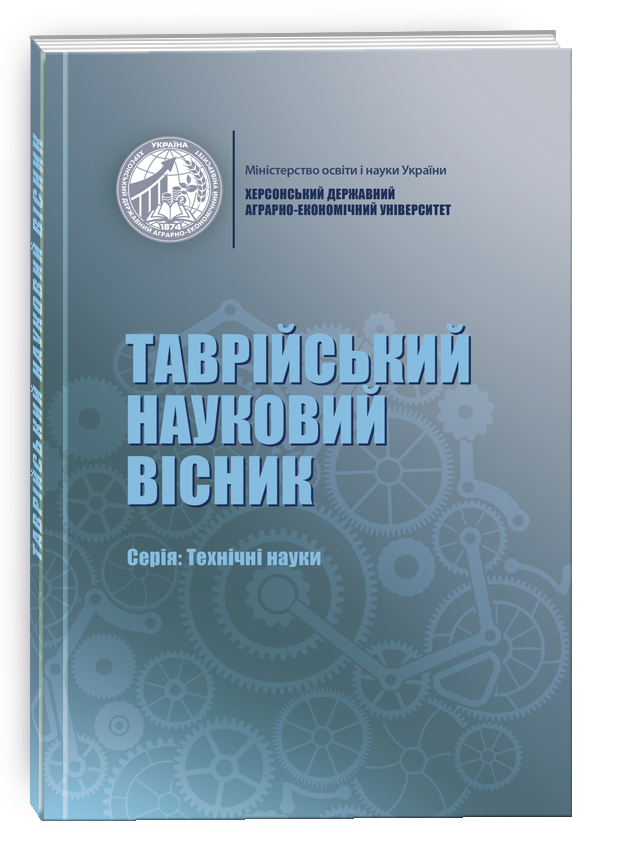INNOVATIVE METHODS OF USING BUILDING INFORMATION MODELING (BIM) IN THE PROCESS OF RESTORATION OF ARCHITECTURAL MONUMENTS DAMAGED BY MILITARY ACTIONS
DOI:
https://doi.org/10.32782/tnv-tech.2023.6.26Keywords:
architectural monument, building information modeling, restoration, laser scanning, photogrammetry, databaseAbstract
The article is devoted to studying the capabilities of BIM technologies in working with architectural monuments damaged as a result of military operations. The problem of preserving cultural heritage is always relevant, but it has acquired particular importance recently. A full-scale war on the territory of Ukraine is accompanied by serious destruction, including architectural monuments. Restoration of these objects should be carried out in accordance with modern standards and using innovative technologies, which will minimize losses. The use of BIM technologies in the field of architectural heritage protection began relatively recently, so the process of developing approaches and adapting work methods is in the testing stage at various sites (from cities to individual buildings). The experience gained must be considered from the standpoint of use in Ukraine, paying special attention to projects developed for the conditions of restoration of monuments after military aggression. The purpose of the work is to analyze BIM tools from the perspective of their use in the restoration of architectural monuments damaged during the war. The research methodology is comprehensive, which implies the use of general scientific and special methods. The work analyzes implemented projects developed on the basis of material from Syria, Afghanistan, Iraq (consequences of military conflicts) and other countries, and examines the experience of using BIM technologies for recording and interpreting the destruction of architectural monuments in Ukraine. Based on the materials studied, it can be argued that BIM technologies have serious prospects for use in working with architectural monuments. They allow you to create comprehensive and accurate documentation, enter additional information during work on site, conduct design work for specialists of various fields on a single platform, speed up decision-making, eliminate possible errors, and monitor project implementation.
References
van Nederveen G. A., Tolman F. P. Modelling multiple views on buildings. Automation in Construction. 1992. Vol. 1, № 3. P. 215–224. URL: https://doi.org/10.1016/0926-5805(92)90014-b (date of access: 14.12.2023).
Ruffle S. Architectural design exposed: from computer-aided drawing to computeraided design. Environment and Planning B: Planning and Design. 1986. Vol. 13, № 4. P. 385–389. URL: https://doi.org/10.1068/b130385 (date of access: 14.12.2023).
Aish R. Building modelling: the key to integrated construction CAD. CIB 5th International Symposium on the Use of Computers for Environmental Engineering Related to Buildings. 1986. Vol. 5. P. 7–9.
Altah H., Hajismail S. Architectural Heritage in Medium and Small Syrian Cities. Management Advanced Strategies for Postwar Recovery. 2022. Vol. 8. Р. 51–65.
Vitasek S. The use of the BIM method for sustainable care of historic buildings: Methodological framework. SHS Web of Conferences 132, 01023. 2022. URL: https://doi.org/10.1051/shsconf/202213201023 (date of access: 14.12.2023).
Saeed Z.O., Almukhtar A., Abanda H., Tah, J. BIM Applications in Post-Conflict Contexts: The Reconstruction of Mosul City. Buildings. 2021. Vol. 11, №. 351. Р. 1–23. URL: https://doi.org/10.3390/buildings11080351(date of access: 14.12.2023).
Castellazzi G., Cardillo E., Lo Presti N., D’Altri A.M., de Miranda S., Bertani G., Ferretti F. & Mazzotti C. Advancing Cultural Heritage Structures Conservation: Integrating BIM and Cloud-Based Solutions for Enhanced Management and Visualization. Heritage. 2023. Vol. 6 (12). Р. 7316–7342. URL: https://doi.org/10.3390/heritage6120384 (date of access: 14.12.2023).
Левченко Н. М., Бейнер П. С., Бейнер Н. В. Реконструкція будівель з використанням BIM-технологій при відновленні міст в Україні. Металознавство та термічна обробка металів. 2022. № 4 (99). С. 64–70.
Hryhorovskyi P., Osadcha I., Jurelionis A., Basanskyi V., Hryhorovskyi A. A BIMBased Method for Structural Stability Assessment and Emergency Repairs of Large-Panel Buildings Damaged by Military Actions and Explosions: Evidence from Ukraine. Buildings. 2022. Vol. 12, № 1817. URL: https://doi.org/10.3390/buildings12111817 (date of access: 14.12.2023).
Almukhtar A., Saeed Z.O., Abanda H., Tah J.H.M. Reality Capture of Buildings Using 3D Laser Scanners. CivilEng. 2021. Vol. 2. Р. 214–235. URL: https://doi.org/10.3390/civileng2010012 (date of access: 14.12.2023).
BIM for Heritage: Developing the Asset Information Model. Historic England. 2020. URL: https://historicengland.org.uk/images-books/publications/bim-for-heritageaim/heag271-bim-developing-asset-info-model/
Kysil O., Kosarevska R, Levchenko O. The innovation of accounting and certification of historic architectural monuments using BIM technology. Budownictwo i Architektura. 2020. Vol. 19. Р. 5–18. URL: https://doi.org/10.35784/bud-arch.888 (date of access: 14.12.2023).






